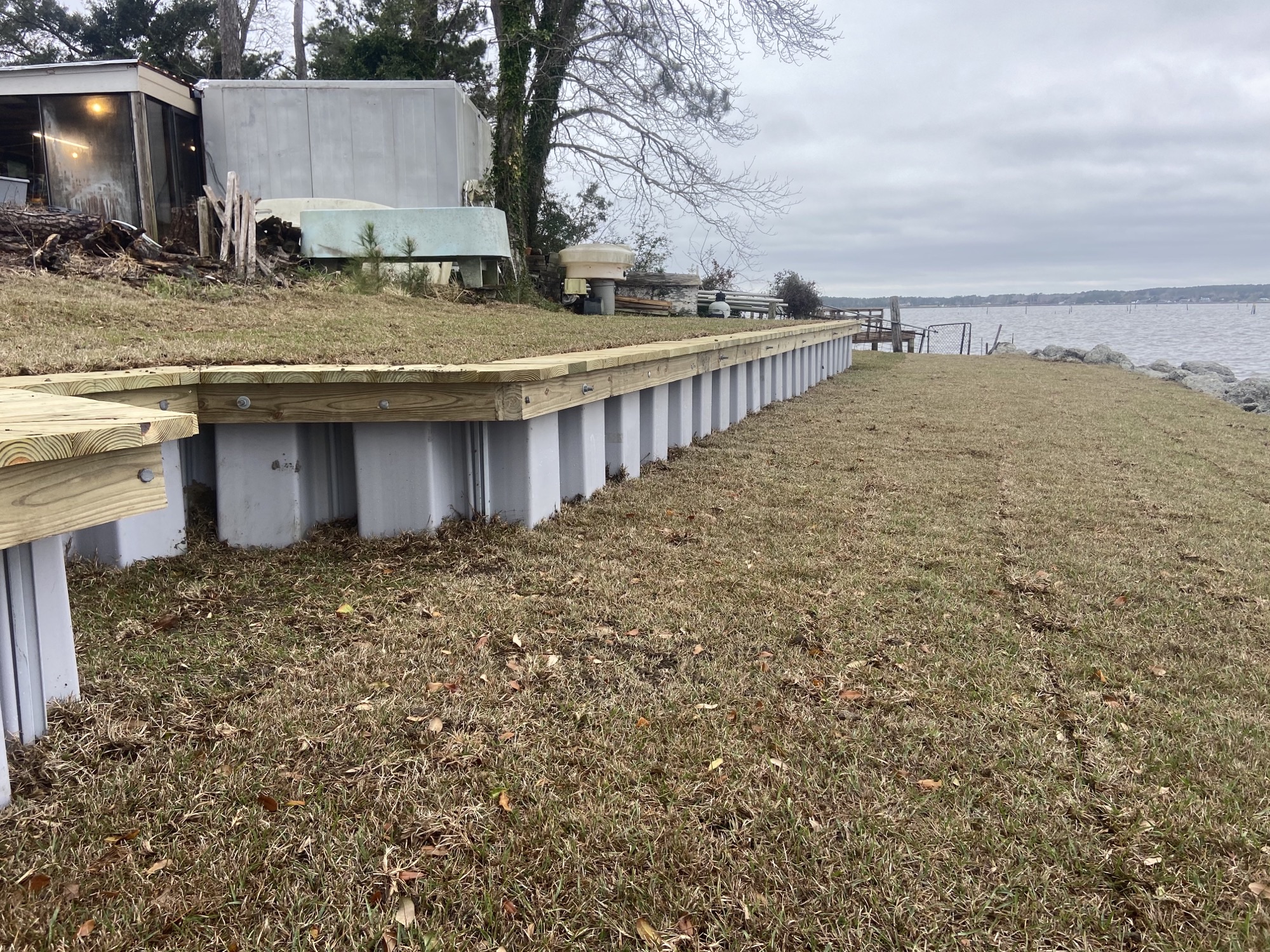Seawalls
Prevent Storm Damage and Flooding with a Custom Seawall Today
North Carolina is no stranger when it comes to Hurricanes. Along with flooding, erosion and other storm damage caused by winds and rains, damaged caused by these events can be anywhere from moderate so severe. Having a seawall on your property will help to prevent future issues and damages from any hurricane or other naturally occurring event that brings these types of issues.
Seawalls are a type of coastal defense for canals and bays that minimize the eroding impact of waves. These massive structures protect land in coastal areas from crashing waves. Usually, they are parallel to the shore and act as buffers against erosion. Seawalls have specific designs that allow them to reflect wave energy back into the sea instead of letting them hit the land and cause potential damage and erosion. There are two basic structures of seawalls: vertical and riprap embankments.
Vertical Seawalls
Vertical walls are upright and sturdy to block waves from damaging the coastline. Vertical seawalls were some of the first types of seawalls built and continue to be important parts of many marinas and waterfront homes. Vertical vinyl walls protect the land from erosion over time by providing a shield from the force of incoming waves and currents.
Riprap Embankments
Riprap embankments consist of rubble mounds in which porous stones or sandbags cover the side exposed to the sea. Engineers will sometimes construct a riprap embankment in front of a vertical wall to lessen the force on the wall. Many lakeside homeowners choose riprap because of its natural appearance and resistance to erosion, but it does have notable downsides. These structures are not well-suited to every area, including wave-prone seasides and turbulent freshwater bodies. In the case of severe damage, riprap can be costly and time-consuming to repair.





